Beetroot cured salmon makes an impressive looking starter on any dinner table. However, despite appearances, it is a relatively easy starter to prepare. If you love salmon this is definitely a dish worth trying.
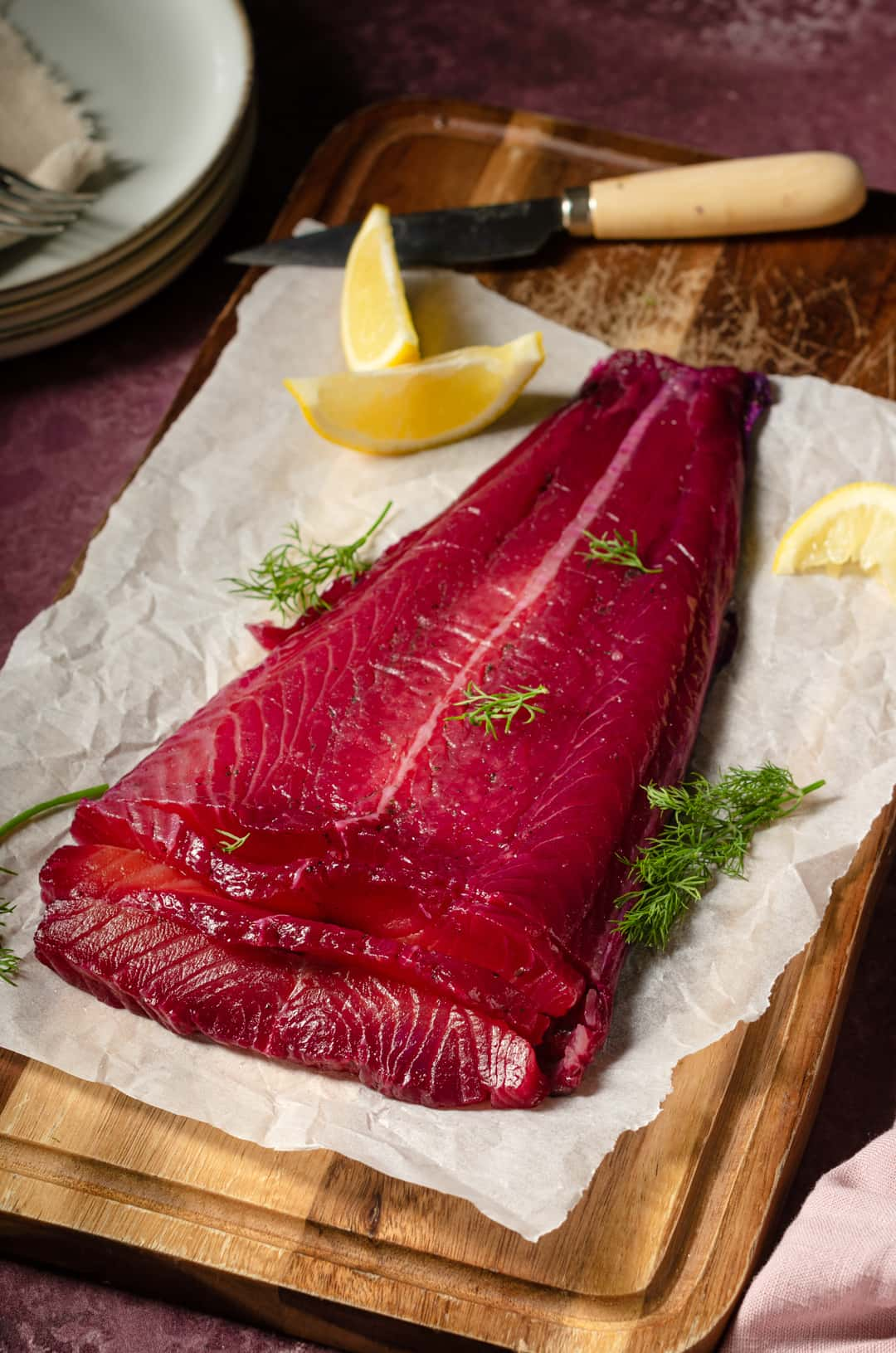
I've paired my beetroot cured salmon with pickled cucumber, Creamy Horseradish Dressing and an Avocado Dill Cream, however, that's just to give you an idea of how to plate it up. It's just as tasty loaded onto a toasted bagel with cream cheese and a squeeze of lemon!
Curing fish is a really simple process, you cure the fish with salt and any other flavourings that you'd like to use. I took inspiration from Scandinavian gravlax and flavoured the cure with beetroot, carraway seeds and dill.
This cured salmon recipe can be prepared ahead, making it the ideal appetiser for the Thanksgiving or Christmas dinner table.
Why you'll love this recipe
- Our cured salmon not only tastes great but is really pretty once plated up making it the ideal addition to any dinner menu.
- Surprisingly simple to cure, yes this dish requires very little preparation.
- Once decent sized side of salmon will easily feed 10 people and you will still have leftovers.
Recipe ingredients
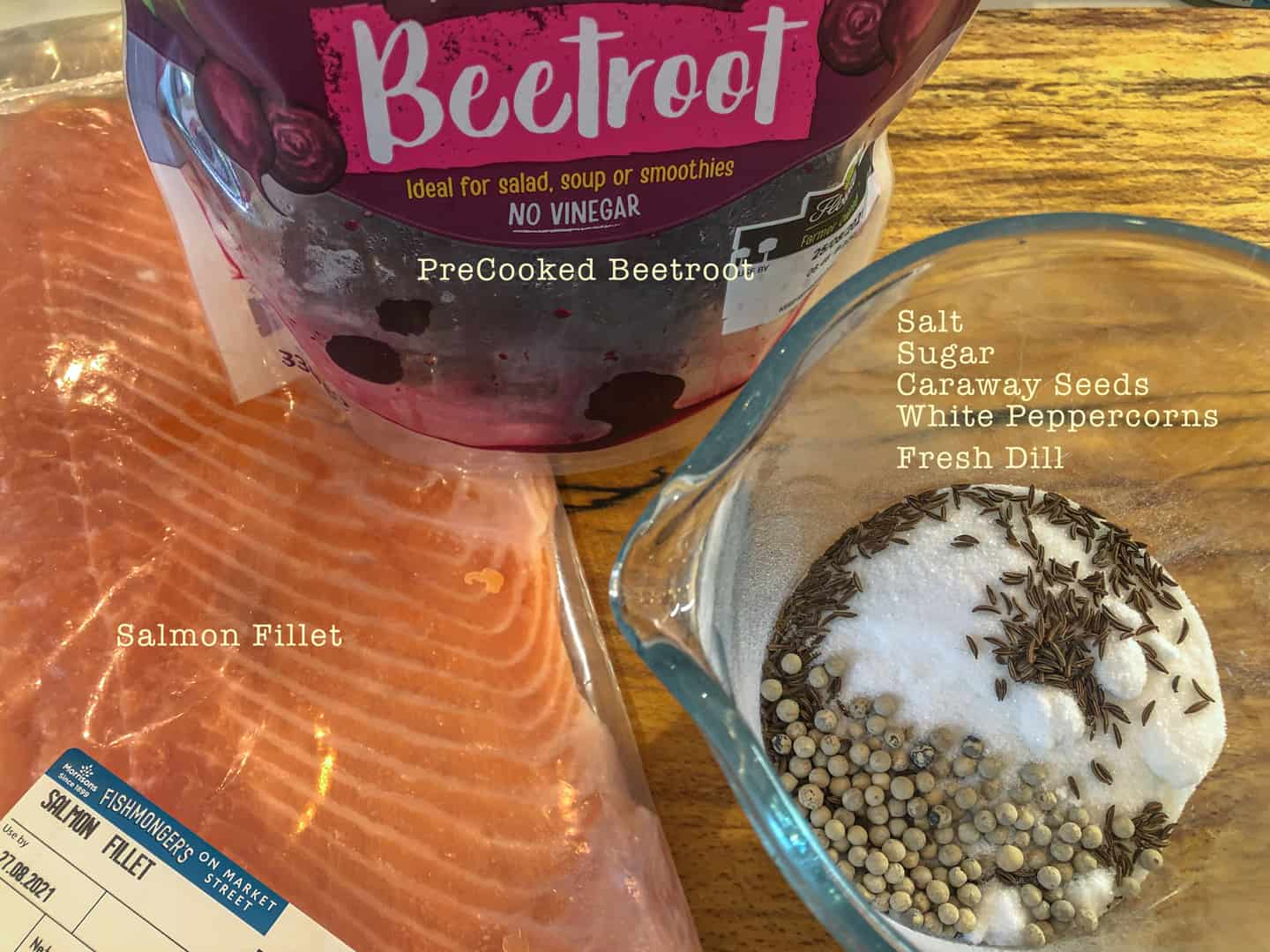
- Salmon - I use a 1 kg (2.2 lb) side of salmon (skin on and de-boned) to serve 10 diners as an appetiser/starter.
- Beetroot - for east I use a bag of precooked beetroot when making the cure.
- Salt - I use fine sea salt as the base for the cure.
- Sugar - I use a little caster sugar, the sweetness balances out the salt in the cure.
- Flavouring - I use fresh dill fronds, white peppercorns and caraway seeds to flavour the cure. These flavours are used in a traditional gravlax.
How to cure salmon
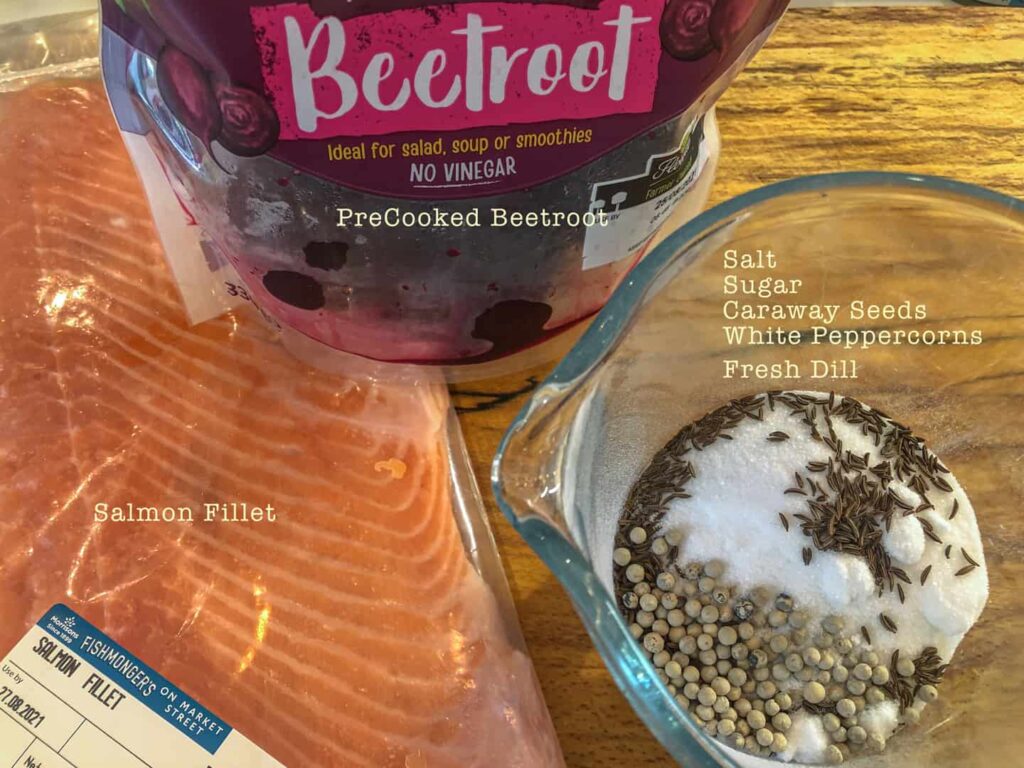
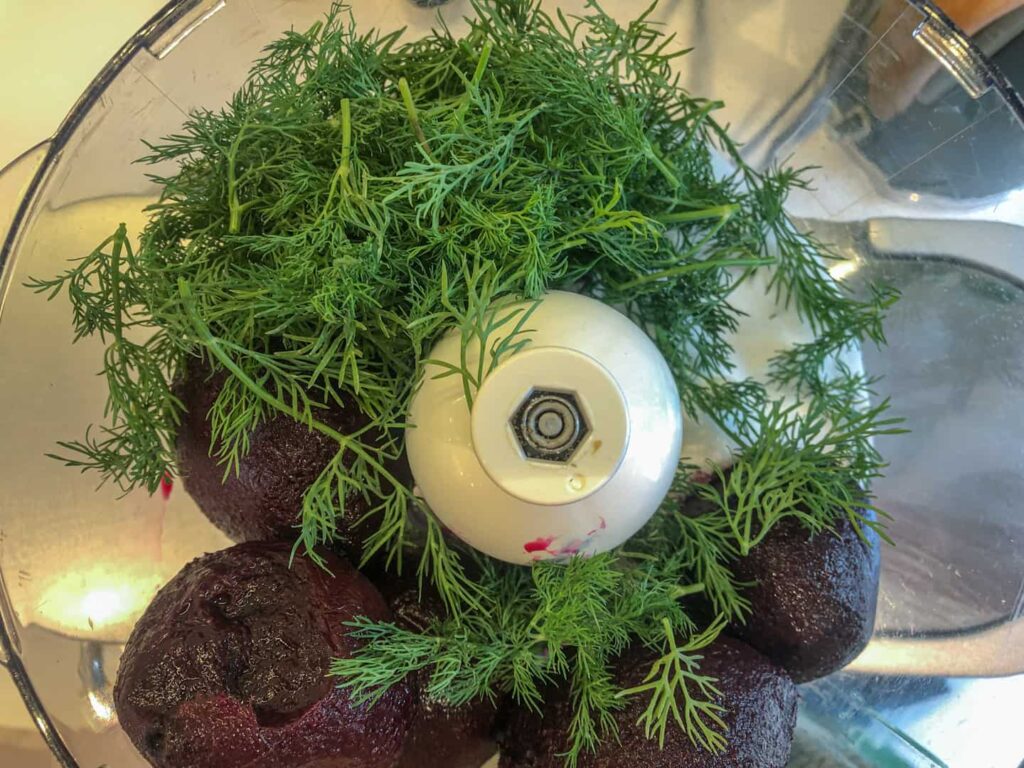
- Cut the side of salmon fillet in half across the middle, trying to ensure each half is roughly the same length.
- Place the salt, sugar, dill, caraway seeds and white peppercorns into a food processor along with the cooked beetroot and blitz to a pulp.
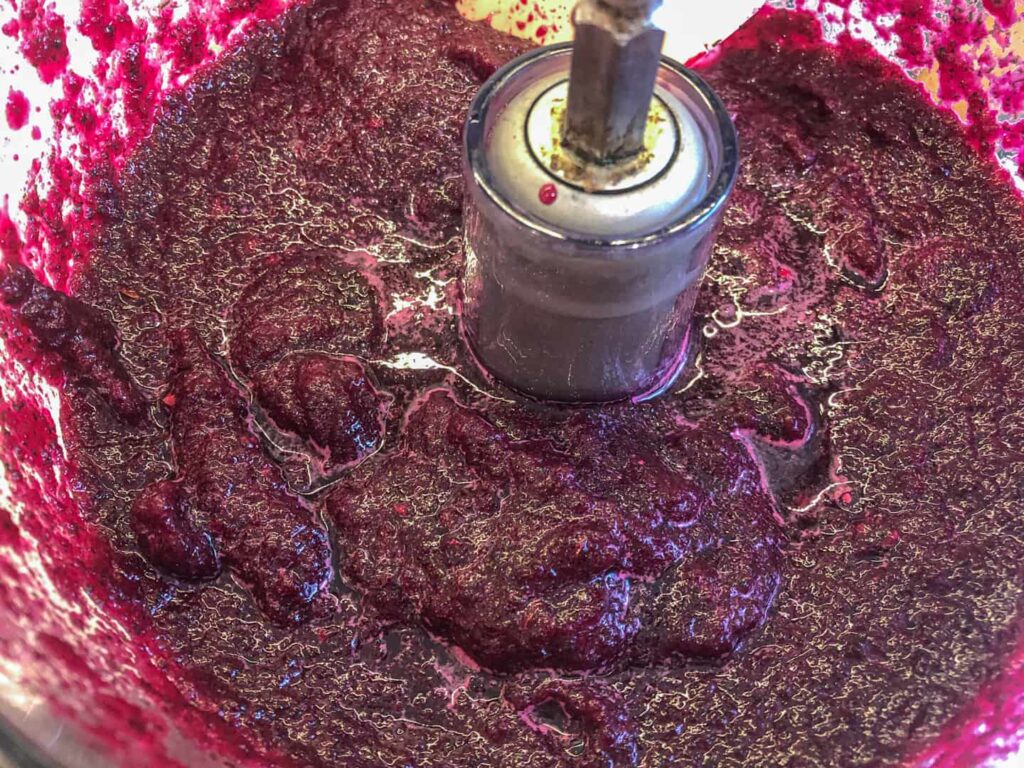

- Look out a dish big enough to fit the salmon in.
- Layer 2-3 sheets of clingfilm on top of each other inside the dish with plenty extra clingfilm to allow you to tuck it around the fish.
- Place one half of the salmon skin side down on the clingfilm.
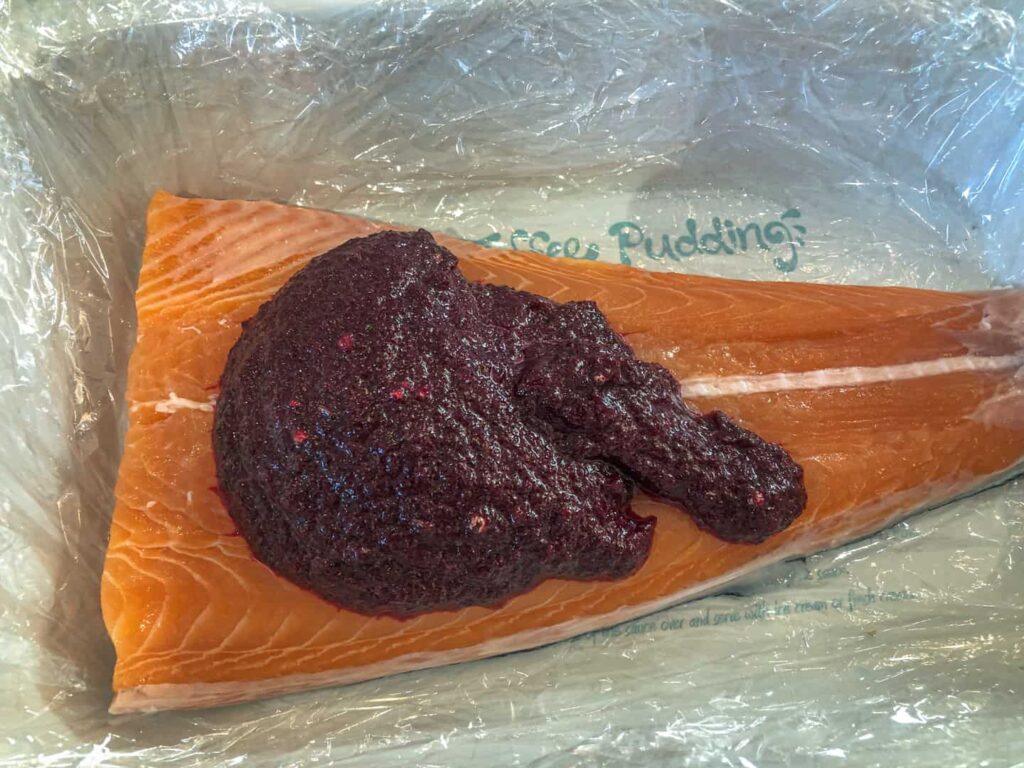
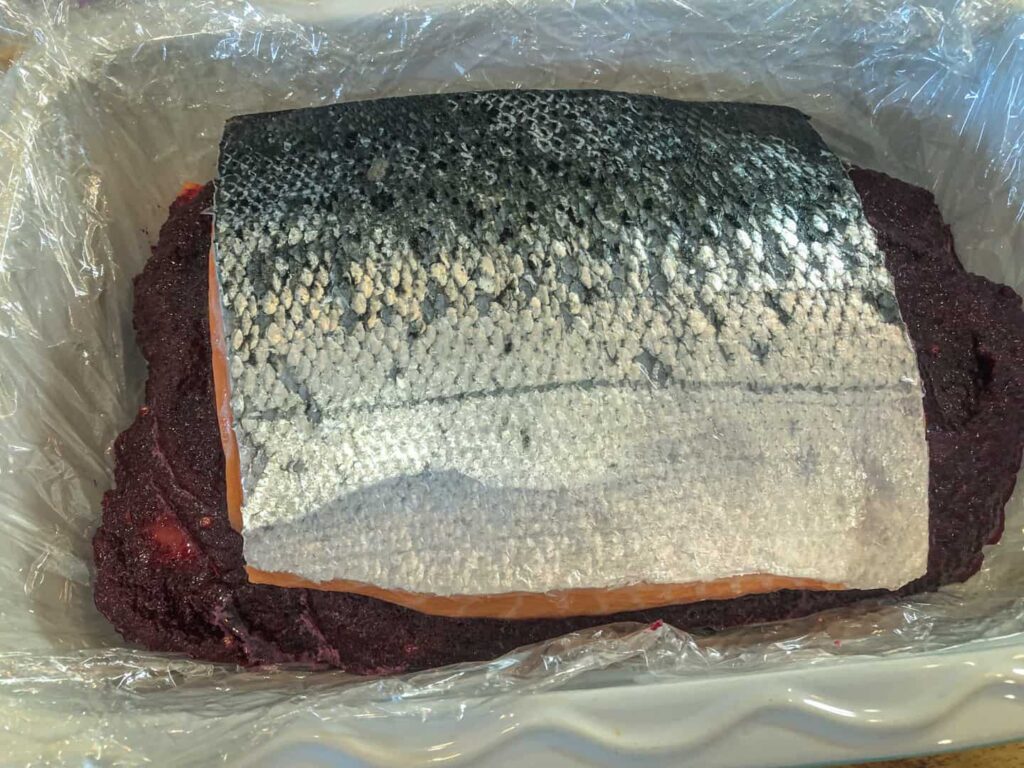
- Pour the beetroot and salt cure over the flesh of the fish and place the other piece of salmon on top, skin side up.
- Ensure the flesh of the salmon is completely covered in the cure and tightly wrap with clingfilm.
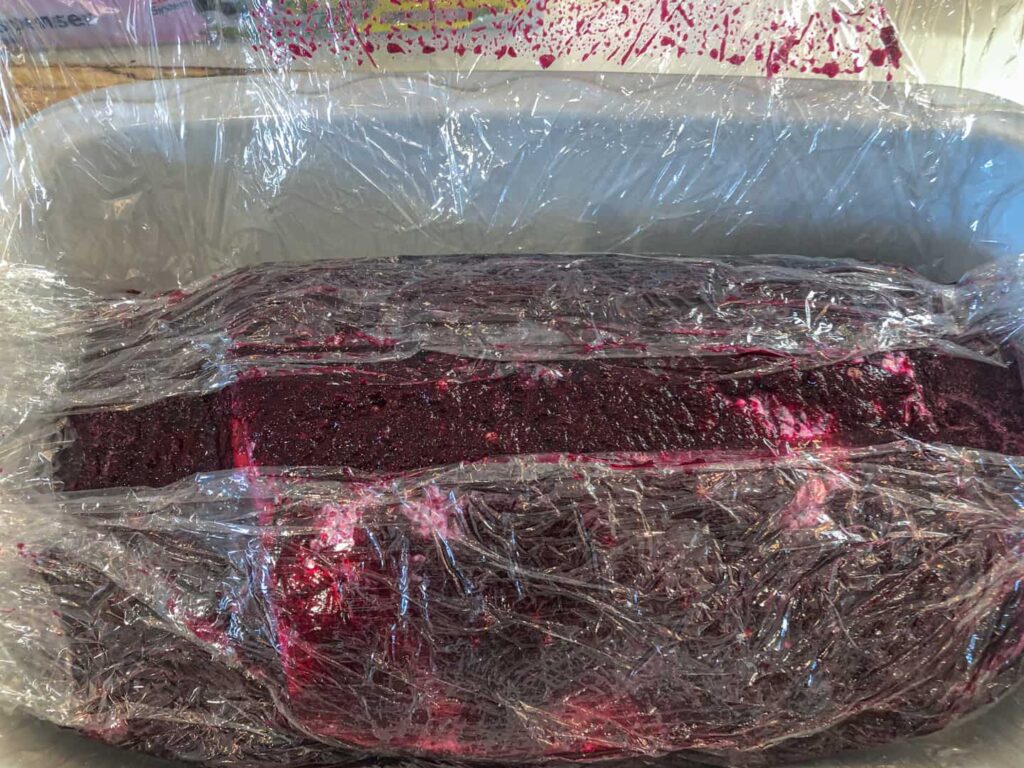
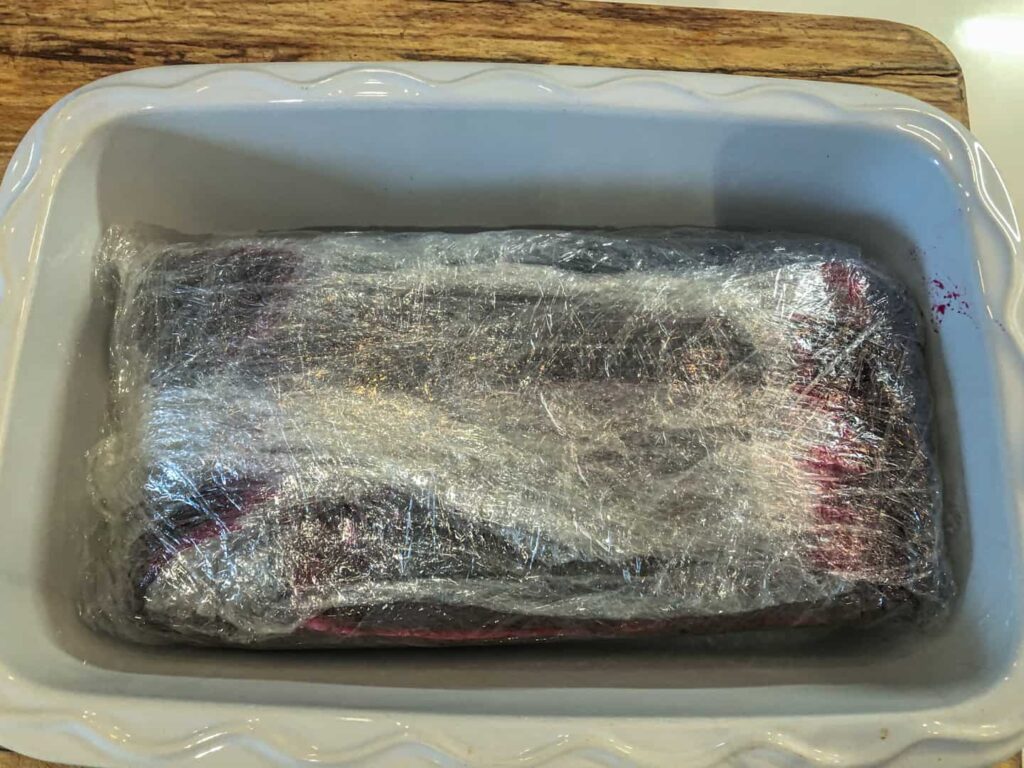
- Wrap the salmon up tightly into a parcel, you don't want any of the cure escaping into the dish.
- Weigh the salmon down with something heavy and place the dish into the fridge.
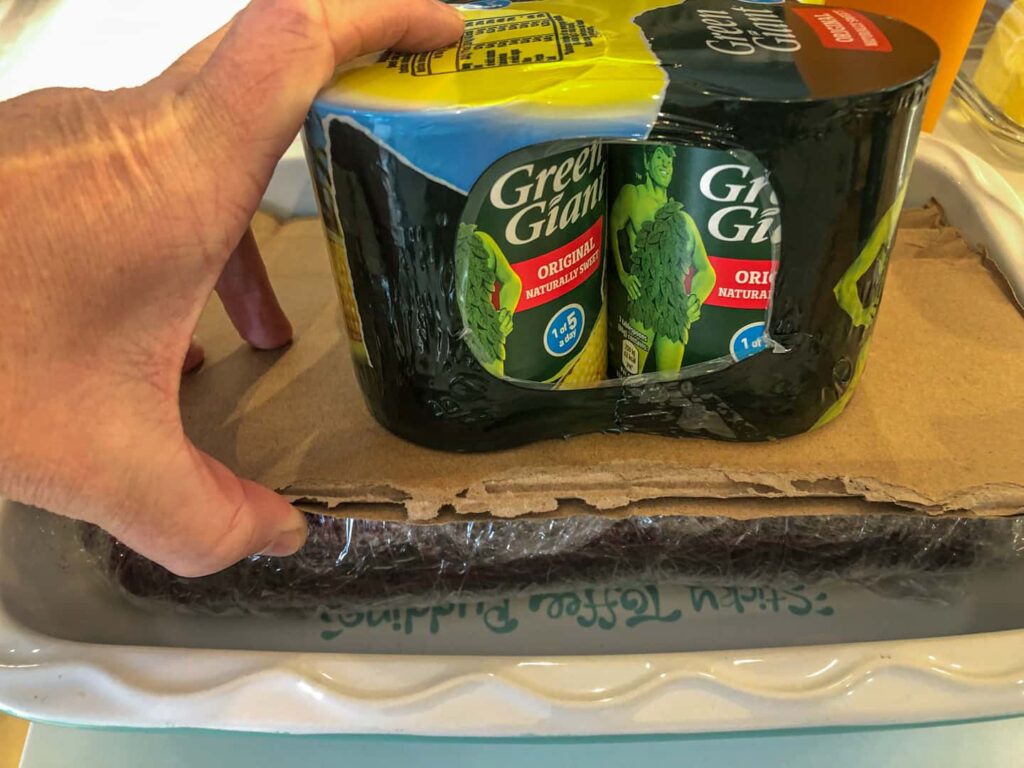
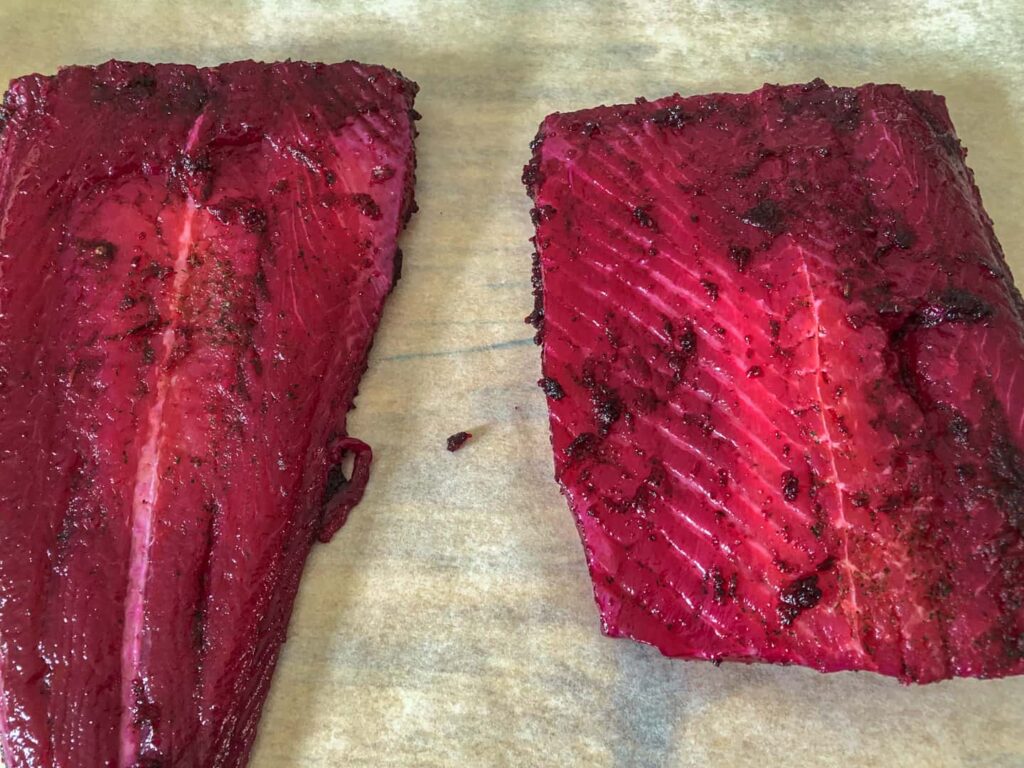
- Cure the salmon for 24-48 hours (ideally 48 hours as it intensifies both the colour and flavour).
- Take care to turn the salmon every 12 hours to ensure an even marinate.
- After 48 hours the salmon will feel firm to the touch - you will know that it is ready for serving.
- Remove from the packaging, brush off any excess cure then serve.
- Use a sharp knife to cut thin slices of salmon.
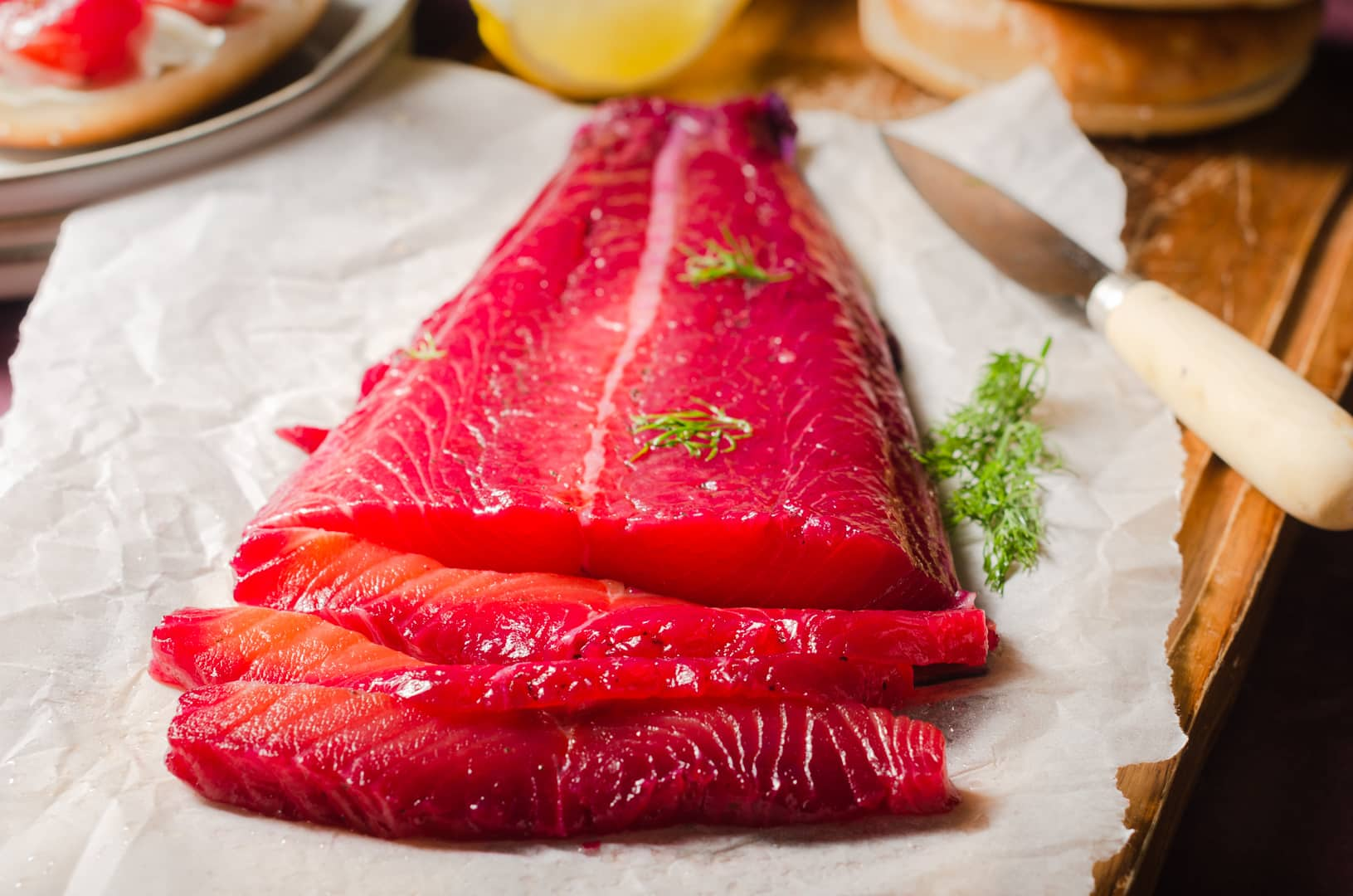
What flavours can be added when curing salmon?
I've opted for beetroot cured salmon with additional flavours of dill, caraway and white peppercorns, the basis of a simple gravlax.
However, you can get creative and cure using a variety of different flavours and flavour combinations. Here are some ideas to get you started:
- Add cirtus: lemon, lime and orange zest
- Add spice and berries: fennel seeds; coriander seeds; juniper berries; black, pink and white peppercorns; star anise;
- Add fresh herbs: dill; parsley; tarragon; horseradish
- Add alcohol: gin; whisky
How to serve cured salmon
When ready to cut the salmon, discard the cure and brush away any excess on the salmon itself. At this point many recipes suggest washing the salmon, however I think this washes away some of the flavour. Instead I tend to take my time to brush away any excess.
If I'm serving the salmon as a starter I like to serve it with my Creamy Horseradish Dressing , Avocado Dill Cream, ribbons of pickled cucumber, cubed of cooked beetroot, and some fresh dill fronds. I've attached an image below for some plating ideas.
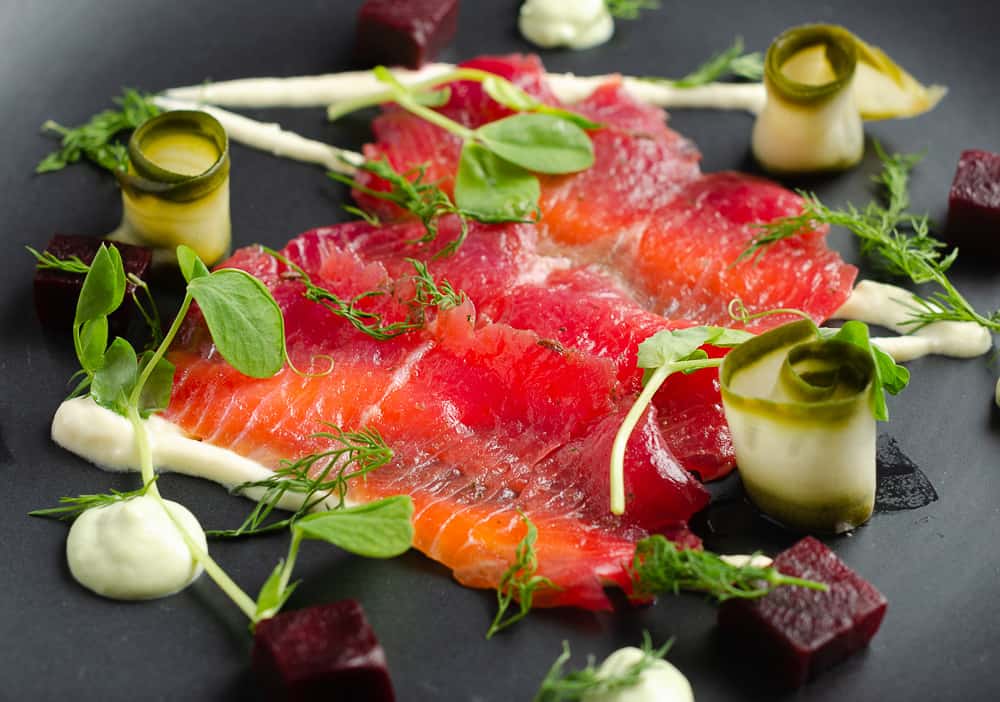
What to do with leftover cured salmon?
As cured salmon does keep well in the fridge for 2-3 days, leftovers can be used to make other dishes. Treat our beetroot cured salmon as you would a smoked salmon and you won't go wrong. The options are endless:
- Think brunch and serve the beetroot cured salmon on top of a toasted muffin, with a hollandaise sauce and soft poached egg.
- Or how about with some buttery scrambled eggs on toast.
- Toast a bagel, spread it with cream cheese and load on some thin slices of the salmon for a delicious lunch.
- Use this salmon in a simple pasta dish, adding just a little olive oil, basil and garlic to the sauce, keep it simple so as not to overpower the delicate flavour of the fish.
- Leftover salmon makes great fishcakes. Mix the salmon with some mashed potato, spring onions or chives and coat in some panko breadcrumbs for added crunch.
- Enjoy cured salmon in a salad with new potatoes, asparagus and peashoots.
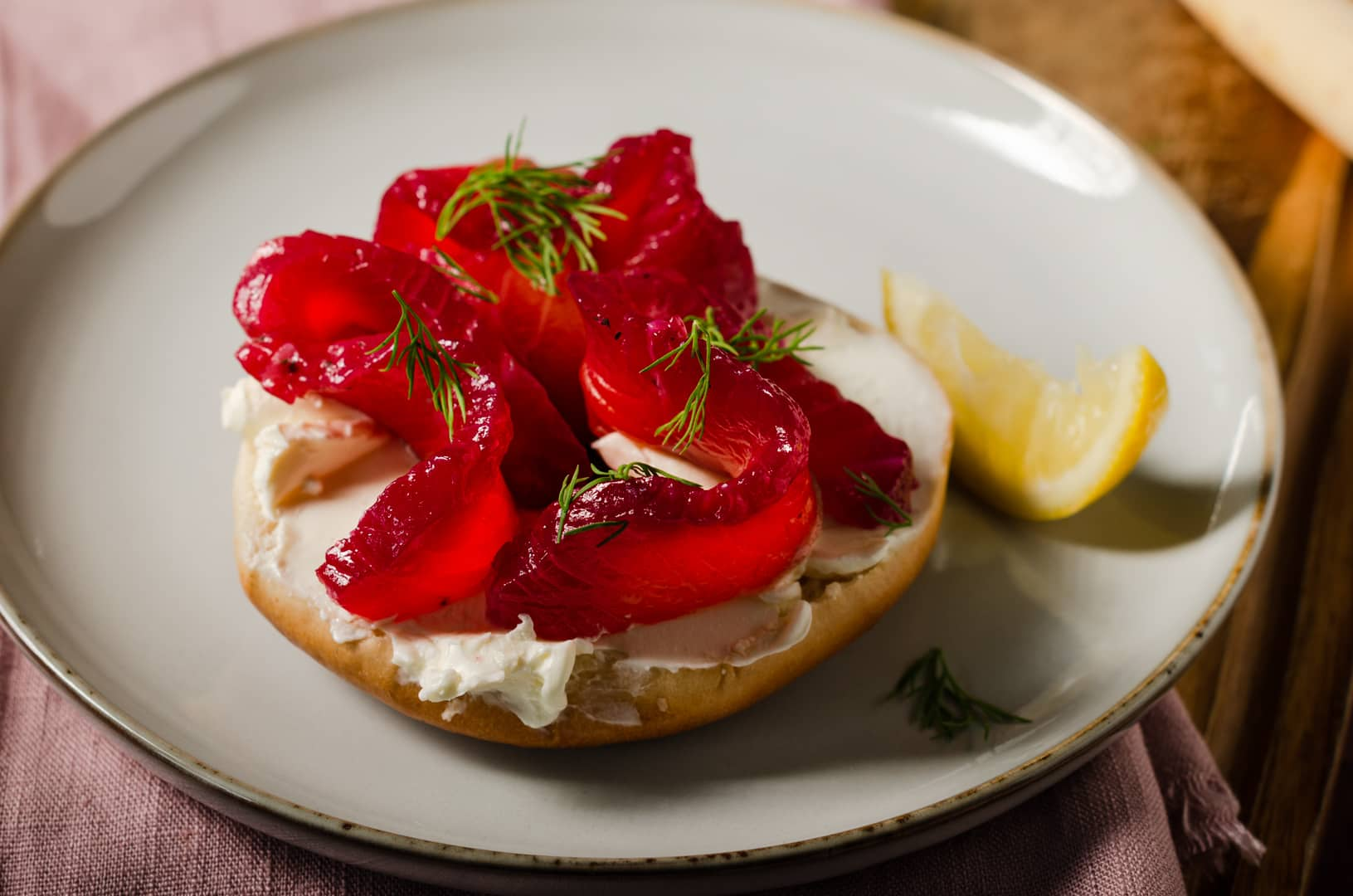
Useful hints & tips
- Turn the salmon every 12 hours, or more often if time allows. This ensure the cure is well distributed across the fish.
- A really sharp knife is essential for cutting the salmon as you want nice even slices of fish.
- Containing no dairy this cured salmon dish is suitable for dairy free diners.
- Allergy advice: gluten free, dairy free, egg free, soya free and nut free. For comprehensive and detailed allergy advice go to Allergy UK.
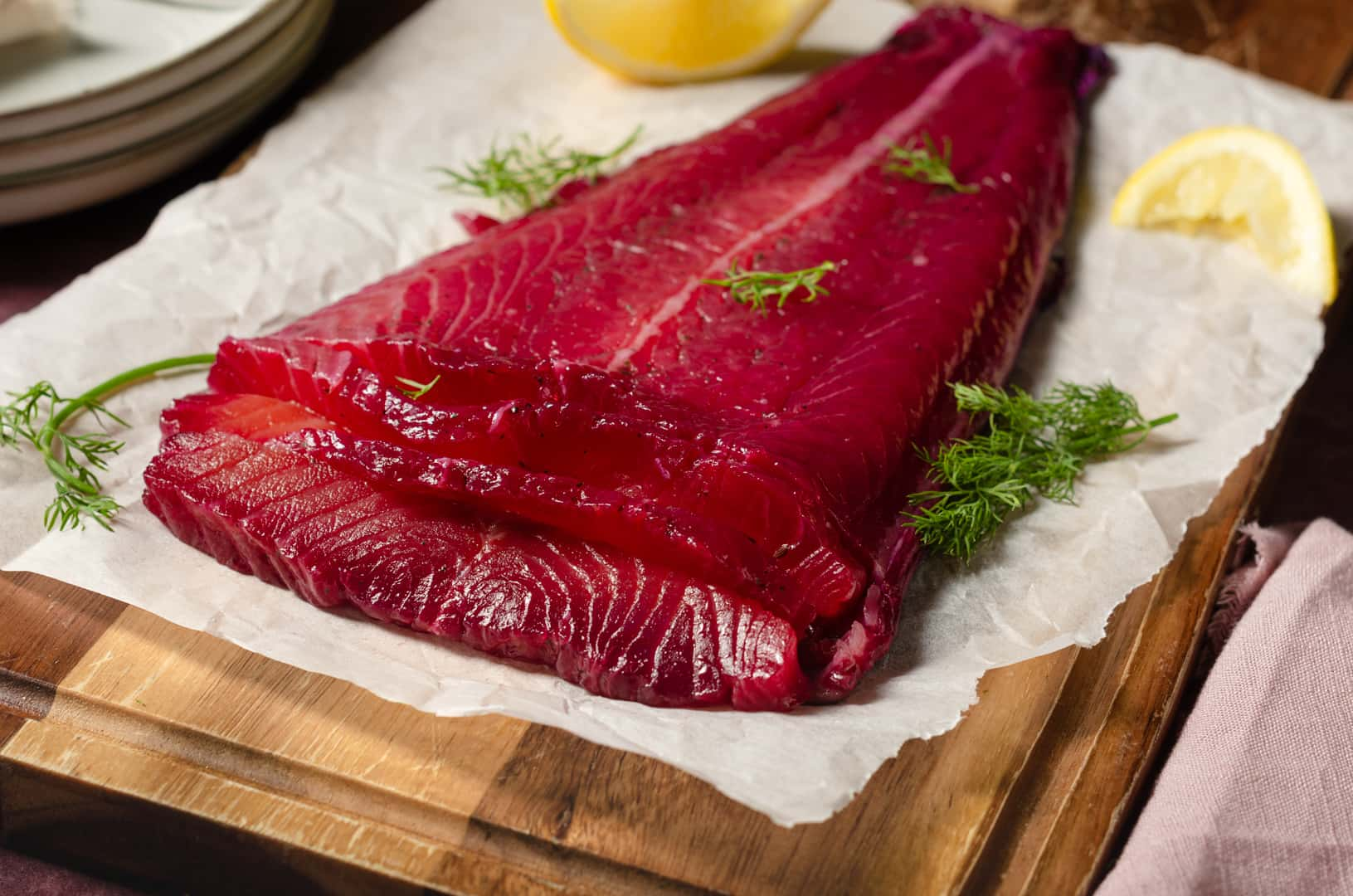
FAQs
Yes cured salmon is still raw, it has just been cured with salt, and in the case of this recipe some beetroot, herbs and spices. But curing the salmon preserves the fish, making it safe to eat.
Curing is a very old method used for storing fish. The salt cure firms up the flesh of the fish, dehydrating it and thereby removing the liquid and killing bacteria.
Yes cured salmon is safe to eat, just ensure you buy a really fresh side of fish. Whether it is cured as we have done here, or smoked which is how you often find it in on the shelves of your local store, if kept sealed and stored in the fridge it is safe to eat.
This recipe is a 48 hour cure so any leftovers can be stored in an airtight container in the fridge and will be safe to eat for up to a week afterwards.
In the same way that you can freeze smoked salmon, you can also freeze cured salmon. It can be stored in the freezer for up to 3 months.
I like to lay any leftovers out on a sheet of greaseproof paper. Lay them in a single layer and then pop into either a box or a bag. If placing more salmon on top, separate each layer with greaseproof paper as this stops the slices of beetroot cured salmon sticking together in the freezer.
Pin the recipe
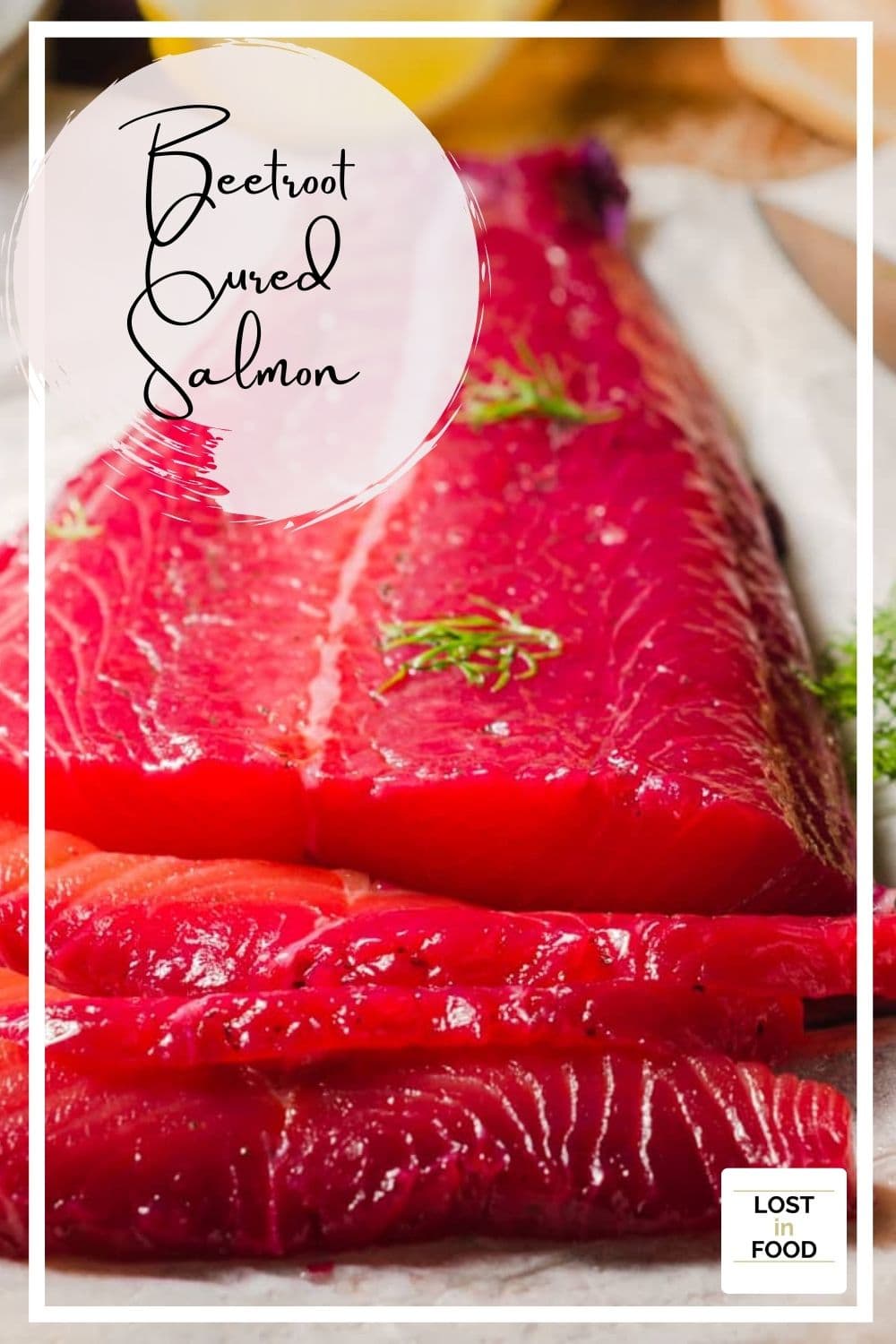
Additional recipe suggestions
If you like this recipe then why not try some of my other great starters:
- Prawn Cocktail with Tarragon Mayonnaise
- Seared Scallops with Celeriac & Bacon
- Scallops with Pea Puree & Butter Sauce
- Smoked Mackerel Pate
- Twice Baked Cheese Souffles
- Courgette Fritters
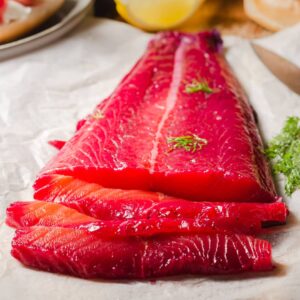
Beetroot Cured Salmon
Equipment
- Food Processor
- clingfilm
- large tray
- Kitchen knife
Ingredients
Cured Salmon
- 1 kg side of salmon (skin on and de-boned)
- 300 g cooked beetroot
- 100 g salt
- 75 g caster sugar
- 1 large bunch fresh dill
- 2 teaspoon caraway seeds
- 2 teaspoon white peppercorns
To serve (optional)
- lemon wedges
- creamy horseradish sauce
- avocado cream with dill
Instructions
Salmon Cure
- Place the salt, sugar, dill, caraway seeds and white peppercorns into a food processor along with the cooked beetroot. Blitz to a pulp.
- Cut the side of salmon fillet in half across the middle, trying to ensure each half is roughly the same length.
- Look out a dish big enough to fit the salmon in. Layer 2-3 sheets of clingfilm on top of each other, inside the dish with plenty extra clingfilm to allow you to tuck it around the fish. Place one half of the salmon skin side down on the clingfilm.
- Pour the beetroot and salt mixture over the flesh of the fish and place the other piece of salmon on top, skin side up. Ensure the flesh of the salmon is completely covered in the cure and tightly wrap with clingfilm.
- Place the wrapped up salmon into a tray and allow it to rest and chill in the fridge for 48 hours. Turn the fish every 12 hours. After 48 hours the salmon will feel firm to the touch.
- Remove the salmon from the cling film, discard any excess cure and brush the fish to remove as much of the cure as possible.
- Using a sharp knife cut the salmon into thin slices, much as you would if cutting smoked salmon. Serve with wedges of fresh lemon and any other garnishes of choice.
Notes
• Please note that the nutrition information provided above is approximate and meant as a guideline only •


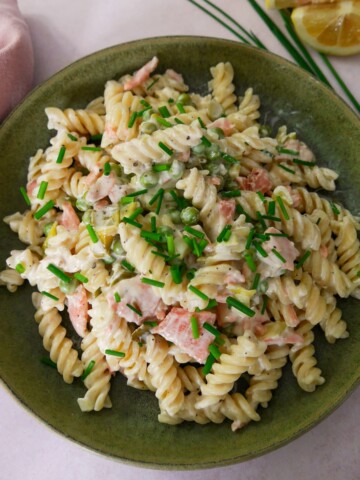
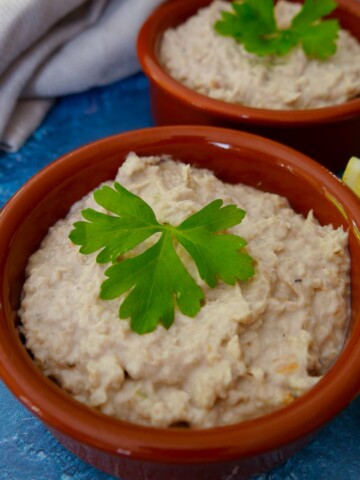

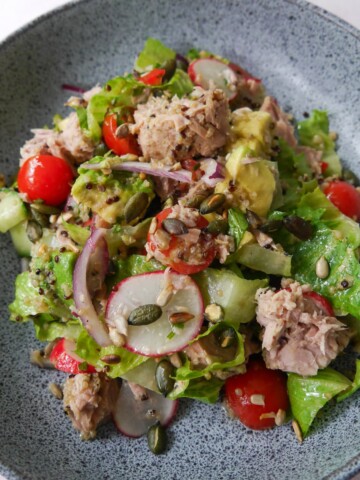
Chloe says
I used just a couple of smaller fillets but this came out so well, the colour was super vibrant and gorgeous.
Lesley says
Yes, it's great to use smaller cuts of salmon and just pare down the quantities of the remaining ingredients.
Hazel says
You said it would be easy and it really was! What a brilliant recipe, it impressed my guests and I think I even impressed myself!
Lesley says
Thank you Hazel, this is one of those recipes that looks so much more complicated that it actually is. I love how quickly you call pull everything together.